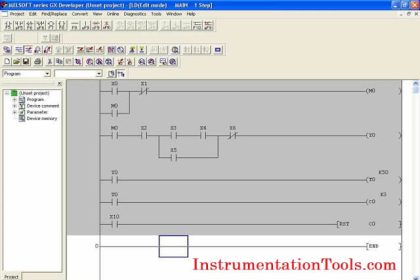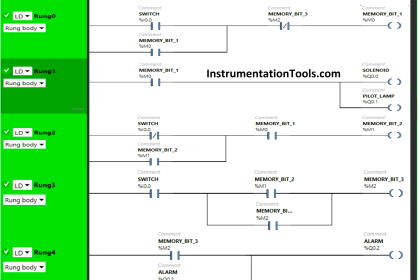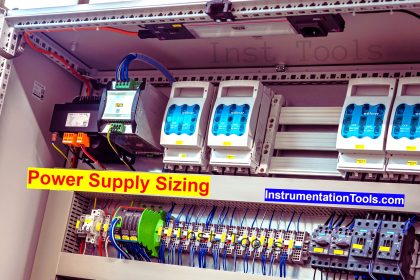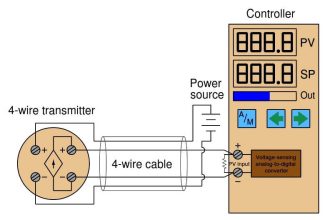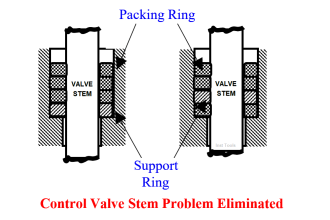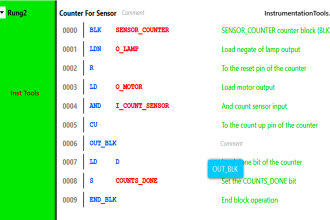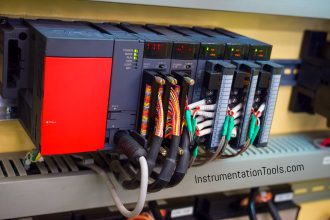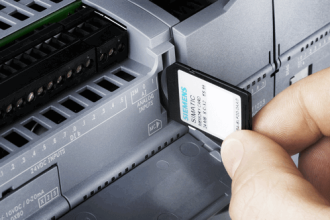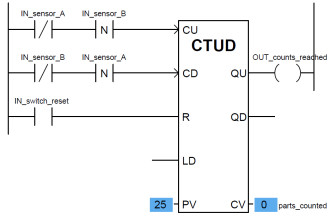Explain the Concept of Latching in PLC using relevant example. Draw a Ladder Logic to control a bulb using push buttons in PLC with latching.
- I0.0 : START (ON) push button.
- I0.1 : STOP (OFF) push button.
- Q0.0 : output energize coil.
- Q0.0 (CONTACT) : latch of output coil Q0.0
Concept of Latching in PLC
As soon as start push button is pressed, the contact I0.0 (N-O) becomes N-C . As the N-O contact I0.1 is already becomes the N-C (because of the normally closed push button in physical connections), the rung goes true and the coil(bulb) Q0.0 becomes energized.
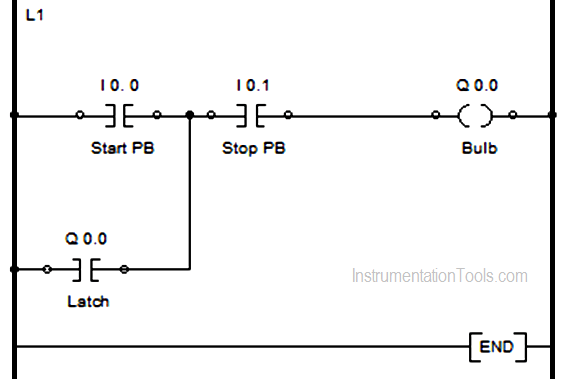
Now, if the start push button is released then also the bulb will remain ON (here comes the concept of latching).
As soon as the coil Q0.0 gets energized, the latched contact of this coil which is represented as Q0.0 (N-O) becomes N-C and the logic will pass through this rung and remains the bulb ON even if the start push button is released.
If we want to switch OFF the bulb ,we simply have to press the stop push button .Due to pressing of stop push button the contact I0.1 becomes N-O (normally open) and rung logic goes false, which in turn de-energizes the coil Q0.0 and switches OFF the bulb.
If you liked this article, then please subscribe to our YouTube Channel for PLC and SCADA video tutorials.
You can also follow us on Facebook and Twitter to receive daily updates.
Read Next:
Light ON OFF Control using PLC
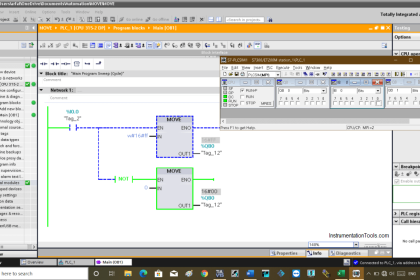
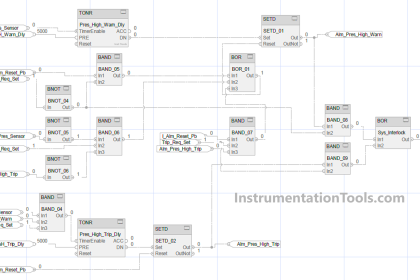
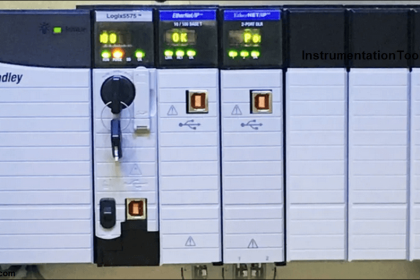
![Multi-Tank Liquid Level Control System with Fill Priority [PLC]](https://instrumentationtools.com/wp-content/uploads/2025/07/Multi-Tank-Liquid-Level-Control-System-with-Fill-Priority-PLC-420x280.jpg)
